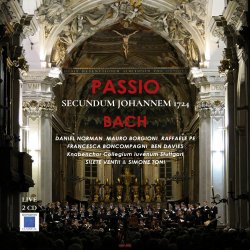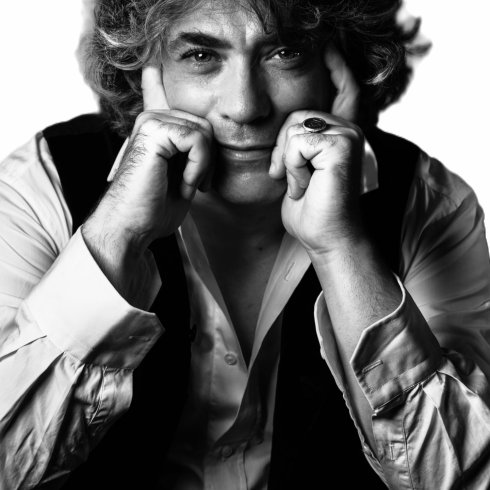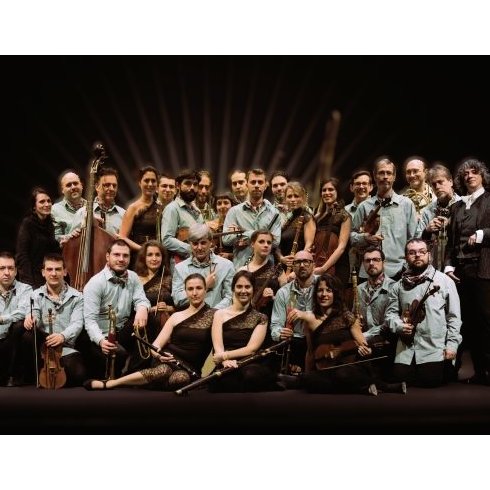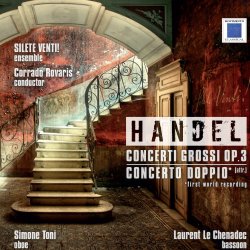
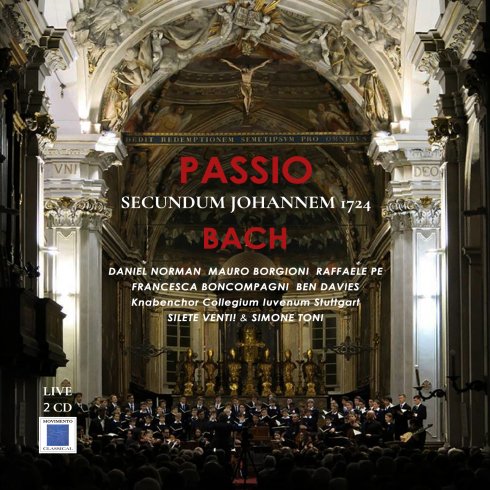
Passio Secundum Johannem 1724
A visitor arriving in the thousand-year-old Urbs Libzi (of or near the lime trees) would find a wealthy city, where trade is the main activity, to welcome him. Around 30,000 people live there and its fair, the famous Leipziger messe, by privilege granted by Maximilian I was elevated to the rank of fair of the Empire in 1409.
lts geographical position made it an obligatory passage along the 'via regia', which regulated the traffic of goods between East and West. Leipzig also has intellectual and cultural ambitions. lt is home to a university founded in 1409 that enjoys great renown and sees itself as the jealous guardian of Lutheran orthodoxy, surpassing Wittenberg itself on this point.
There is no opera house in Leipzig, music vibrates in churches, responding to Augustine's fundamental precept taken up by Luther: Wer singt betet doppelt (he who sings prays twice). The role ofThomaskantor, or rather of music teacher and choir director in the church of St.
Thomas, which was accompanied by the position of Director musices , i.e., responsible for all musical activity in the churches of the 'city by the lime trees', is one of the most prestigious in the whole of Germany and, what is most important for the story we tel1, this role was vacant in 1723 . In June 1722 , after thirty years of honourable service , Johann Kunhau died and the void he left behind is difficult to fill. The Municipality of Leipzig immediately identifies the ideal successor to Kantor's position, his name is Georg Philipp Telemann. With Telemann, who in addition to being Germany's most famous composer had studied at the University of Leipzig, frantic negotiations began that went on for months. When the contract is ready Telemann renounces after obtaining more money and further privileges from Hamburg, the city from which he is salaried. Dismay in Leipzig, all to do over.
The focus shifts to a second famous composer: Johann Christoph Graupner, a pupil of Kunhau, also a former student in Leipzig, fits the canons perfectly. History repeats itself, Leipzig once again suffers the snub . Graupner with the contract in his pocket returns to Darmstadt, where he serves as Hofkappelmeister at the court of the Landgrave of Hesse - Darmstadt, and there he stays, rewarded with a lavish raise.
This is where Bach, 38, born in Eisenach in Thuringia, comes in. They teil wonders about him as an organist, those who have listened to him tel1 of an extraordinary and enthralling talent, capable of daring and artifices never heard before, amazing technique and inventiveness; he is able to improvise non-stop for hours and with the pedals to reach impossible speeds . We are at the beginning of 1723, the situation is beginning tobe embarrassing for Leipzig; Johann Sebastian is invited to show his Art on several occasions : he composes a cantata, play the organ.
He's appointed new Kantor of Leipzig, a role he would hold for almost thirty years until hisdeath. Nothing foreshadowed the earthquake that his passion in music would represent.
To put us weil into the context in which these sounds see the light, it is important to remember that for the six weeks of Lent, music was forbidden in both public and private places dwellings. The sounds reappeared timidly on Palm Sunday until Good Friday when the city poured into the church to witness the Passion of Our Lord, a performance that consisted of the 'tuneful' reading of the Gospel text interspersed with interventions by the choir impersonating the Turba and emphasising the precipitation of events. This is a very old tradition: as early as 1200 Durandus recommended that the words of Christ should be rendered in a so fter tone, those of the evangelist in anormal tone, and those of the 'empissimi giudei' with clamour et cum asperitate. This was the case, even though in Germany a new, more articulated form with greater compositional ambitions was making its way from the beginning of the 18th century: the Passion Oratorio. The whole of Europe was the scene of sacred performances, not necessarily related to sound.
They were often forms of popular culture in which the learned (the ecclesiastics) intended to explain in vernacular language to the mostly illiterate people the events of Jesus' death. They were rituals of great drama and emotional involvement, sometimes so violent that in some cases they were banned. At the end of the 16th century in Rome, the papal government, for reasons of public order, put an end to the narration that took place at the Oratory of the Gonfalone. More than a performance, it was a massacre: Judas, Pilate, the Roman soldiers and the other villains were lynched by the invaded crowd who did not distinguish between the performer and the character. Bach, and this aspect is not emphasised enough, treasured all aspects of the Passion. What he revealed to the world on that Good Friday of 1724 was an act of extraordinary revolutionary force. Never heard before and at the same time unrepeatable . The expressive power of the Passio Secundum Johannem , the grandeur and profoundly theatrical conception, the complexity and at the same time the astonishing evocative capacity, the sonorous violence, the dragging and enthralling 'scenic' tempos as in an action film, overwhelmed the audience with the most devastating and impetuous emotions, certainly shocking many and leaving others speechless.
A clause is inserted in the contract in which Johann Sebastian undertakes to compose music that is not 'too' theatrical.
The Rediscovered Passion
The history of the Passio Secundum Johannem is complex.
lt has come down to us through various drafts that can be reconstructed with the help of a series of part files made by copyists contemporary with Bach and presumably used for performances. By collating these texts, the score that is usually used today was compiled over the years. In this large number of staves, some of which date as far back as twenty years after Bach's death, the only truly original source has been lost sight of (and I find this inexplicable), namely a manuscript score by Bach dated 1739.
20 meticulously penned sheets, the same meticulous care with which Johann Sebastian wrote the splendid score of the Matthew Passion. The difference is that the score of the John Passion is unfinished; looking through the documents we know that the performance planned in 1739 was cancelled and the composer was very upset, offended and disappointed, not explaining the municipality's decision. In the manuscript score, which is interrupted at the end of the S bars of the evangelist's recitative before the intervention of the chorus no. 12 b (bist du nicht), details stand out to the eye that raise many questions. The absence of the flutes is the most revealing notation, shifting entire balances throughout the masterpiece.
An exciting quest f o r us. We erased layers of time that had become routine, stifling vibrations and secreting original codes. To give an example, let us imagine the restoration of
Leonardo's Last Supper, during which thicknesses of brushstrokes from after its creation were removed, revealing fingers that had become langer and deformed, the protagonists' features burdened that hid the original emotionality; bread or glasses had disappeared from the table ... darkness had taken over from the light that now pervades everything. Certainly a masterpiece in any case, even badly transfigured over the years, as is the Passion of John however it is performed, but looking for sounds is marvellous. The colours are accentuated and so is their strength, the succession of arias, choruses and recitatives acquires drama and theatrical tension. The mirror- symbolic structure so dear to Bach in composing a grand opera is revealed.
The search extended to other performance details. The wonderful choir in Stuttgart allowed us to hear the voices Bach wrote for (all his sacred music was conceived for children and young people to sing, not for adults as we are used to hearing). The sounds of Silete venti! (a Milanese orchestra on period instruments) devoutly recreate forgotten timbres and balances between instruments.
We wanted to understand what a Passion play meant, tried to reproduce its spectacularity.The painful violence of sound . What we played and listened to is a first performance from the manuscript retraced and unveiled, an exciting journey of sound research; all Milanese and celebrated in the beloved church of San Marco with its extraordinary musical history .

